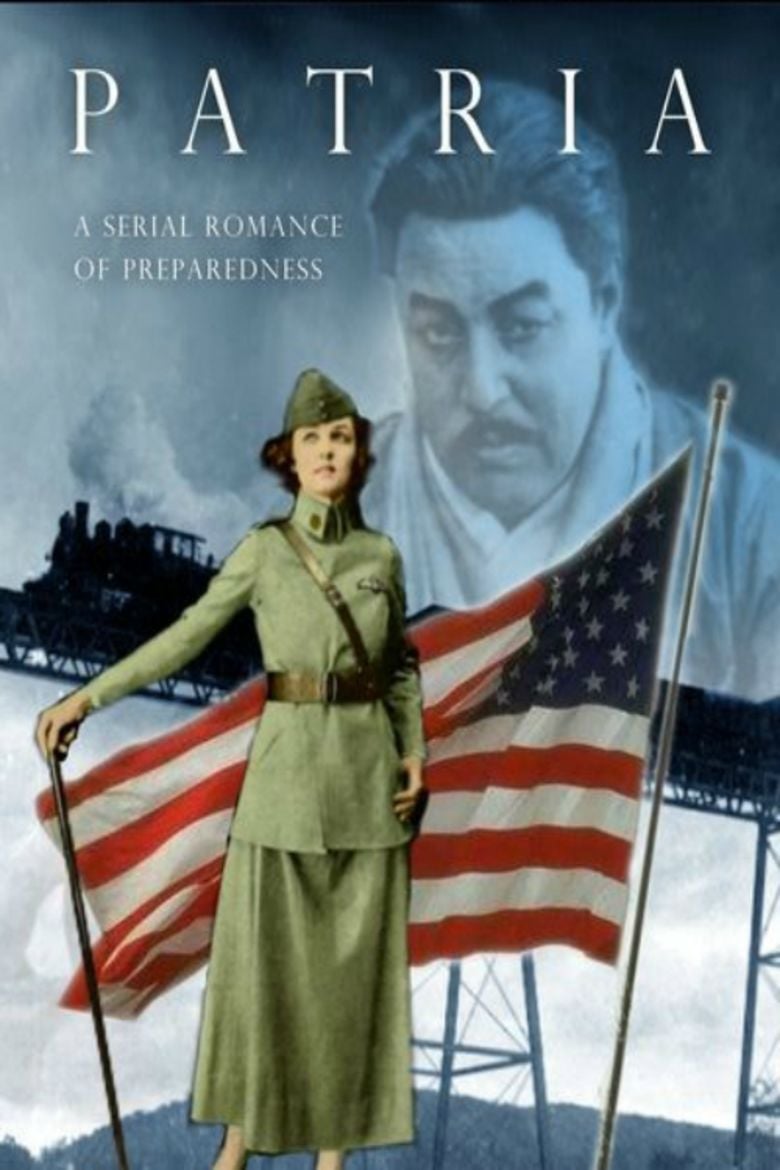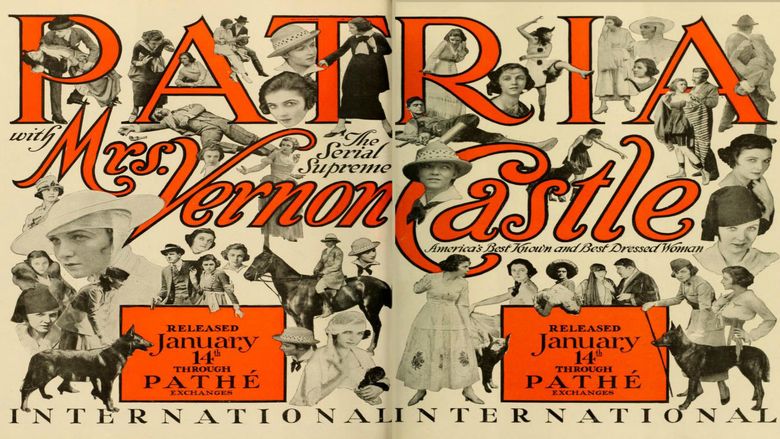Patria (serial)
4.4 /10 1 Votes4.4
Budget 90,000 USD (1917) Language English | 4.2/10 IMDb Genre Action, Drama Duration | |||||||||||||||||||||||||||||||||
 | ||||||||||||||||||||||||||||||||||
Director Release date January 14, 1917 (1917-01-14) Cast Irene Castle (Patria Channing / Elaine), (Capt. Donald Parr), (Baron Huroki), Dorothy Green (Fanny Blair), George Majeroni (Juan de Lima), (Pancho Villa)Similar movies The Man from U.N.C.L.E. , Mission: Impossible – Rogue Nation , The Secret Code , Kingsman: The Secret Service , Salt , Spy Tagline The great romance of preparedness. | ||||||||||||||||||||||||||||||||||
Patria serial 1917 existing chapters slideshow featuring warner oland irene castle
Patria (pronounced PAY-tree-uh, as in patriot) is a 1917 15-chapter serial film starring Irene Castle, Milton Sills, and Warner Oland, based on the novel The Last of the Fighting Channings by Louis Joseph Vance. Patria was an independent film serial funded by William Randolph Hearst in the lead-up to the United States' entry into World War I. The film in its original form contained anti-Japanese propaganda and was investigated by a Senate committee. The Argentine title for the film was La Heroina de Nueva York.
Contents
- Patria serial 1917 existing chapters slideshow featuring warner oland irene castle
- Patria 1917 serial episode 2 treasure with summary of episode 1
- Plot
- Cast
- Production
- Senate hearing
- References

Patria 1917 serial episode 2 treasure with summary of episode 1
Plot
Spies from Japan conspire to steal the Channing "preparedness" fortune and invade the United States, beginning in New York, then allying themselves with Mexicans across the border. They are stopped by the efforts of munitions factory heiress Patria Channing and U.S. Secret Service agent Donald Parr.
Cast
Production
Patria was financed with "about" $90,000 from William Randolph Hearst. The plot implied that the United States might soon be at war with Japan, despite Japan being an ally of the United States at the time. The original plot involved a Japanese spy ring operating in the United States and seeking gold and munitions. President Woodrow Wilson asked Hearst to modify the serial and remove anti-Japanese material. As a result, Warner Oland's character name in title cards was changed to "Manuel Morales," and the character was shown more frequently dressed in a suit, though the Japanese characters retained their kimonos in early episodes. The action was also moved across the border to Mexico beginning in Episode 11, though as is sometimes erroneously stated, Pancho Villa did not appear in the film, Baron Huroki and a new character, General Nogi, continued on as adversaries to Patria and Captain Parr until Huroki's defeat and suicide in Episode 15.
The serial was based on the novel The Last of the Fighting Channings by Louis Joseph Vance.
Jacques Jaccard directed scenes in California while Leopold Wharton and Theodore Wharton directed from Ithaca, New York.
Following the serial's release Edgar Wallace was commissioned to write a 15-part "novel" for The News of the World newspaper, which published the first weekly instalment on 9 December 1917.
Senate hearing
The production was investigated by a Senate committee as German propaganda after World War I. A German propagandist, whose articles had appeared in Hearst newspapers, had written a letter to Franz von Papen explaining the scheme to use a motion picture to deprecate Japan. Captain G. C. Lester of US Military Intelligence, testified that "Patria exploited the very idea which was set forth generally in (the propagandist) Fox's statement."
References
Patria (serial) WikipediaPatria (serial) IMDb Patria (serial) themoviedb.org
